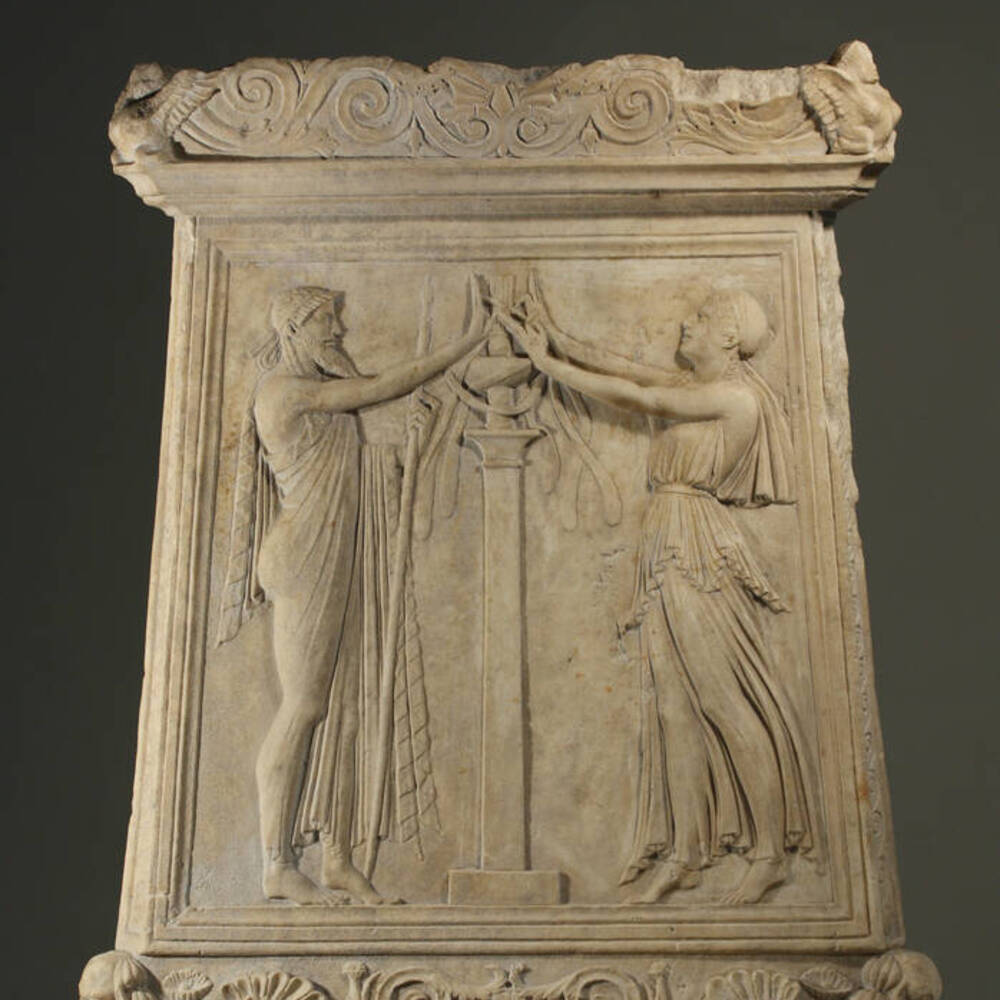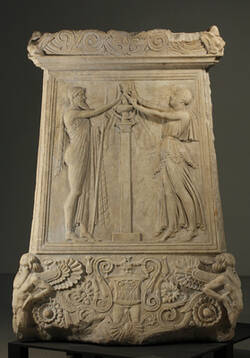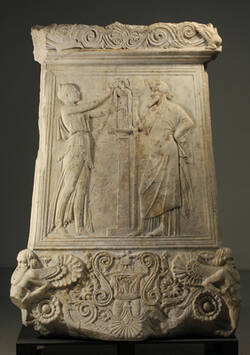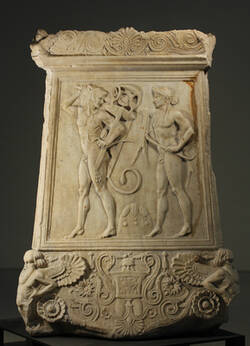Greek artworks of all genres were highly popular in Rome from the second century BCE onwards. It was not only bronze and marble replicas of famous statues that were imported, primarily from Athens, but also numerous objects embellished with reliefs, since these were ideal for decorating villas and temples. The ornate Dresden candelabrum base is one of the heaviest (weight: 1.0 t) and largest of its kind.
Further Media




Hercules is renowned for his great courage and strength in achieving almost impossible tasks – and even today, ‘the labours of Hercules’ is still used to mean something requiring a superhuman effort. But actually the Twelve Labours of this mythological hero had a very sad backstory. Hercules was the illegitimate son of Zeus, king of the gods. He was hated by Hera, Zeus’s jealous wife – and later Hera punished Hercules with a fit of madness in which he killed his own children. When he recovered his senses, he was desperate to atone for his crime. To find out what his penance would be, he visited the Oracle at Delphi, the most famous centre for prophesies in ancient Greece. Unfortunately, Hercules was a murderer – and such criminals were not allowed in the sanctuary. Outraged by the Oracle’s priestess refusing to let him into the shrine, Hercules forced his way in. He then tried to steal the shrine’s most important artefact – the Delphic Tripod, the three-legged stool where the Priestess sat to deliver the oracles. According to legend, the stool was set over an opening in the earth emitting vapours containing trance-inducing substances. When Apollo, the protector deity of the Delphic Oracle, heard of Hercules’s antics, he was furious. To complicate matters further, Apollo and Hercules were also half-brothers, both sons of Zeus. There was, though, little love lost between them so when Apollo sought to intervene and stop Hercules stealing the tripod, they ended up in a wrestling match. Ultimately, their father Zeus threw down one of his thunderbolts to separate them. Apollo was given the tripod, and Hercules received his oracle showing him the way to atone for his sins.
- Location & Dating
- Last quarter 1st century BC
- Material & Technique
- Pentelic marble
- Dimenions
- H: 130,0 cm; Figurenhöhe (Apollo) 62,5 cm
- Museum
- Skulpturensammlung
- Inventory number
- Hm 027